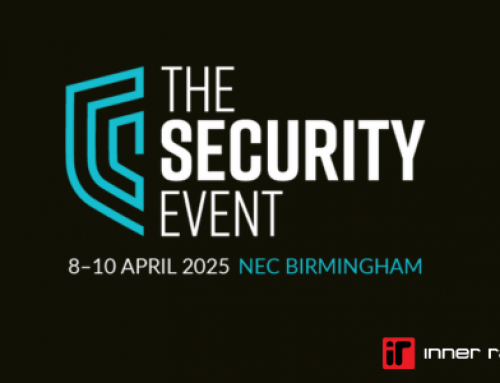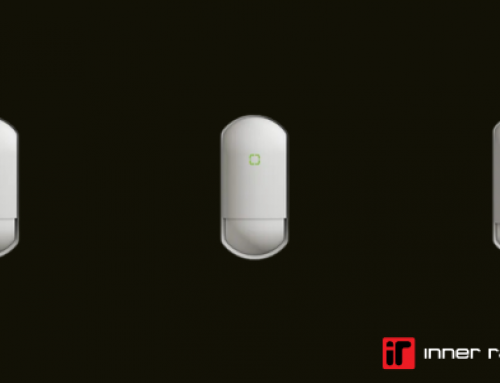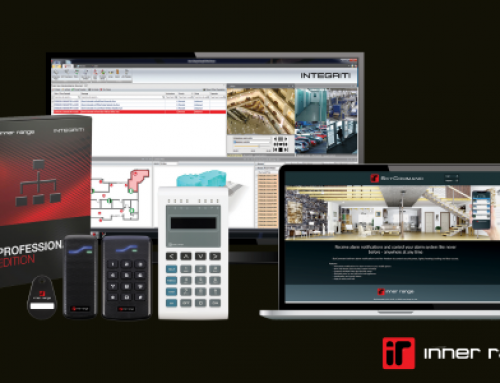
Convergence may be the latest catch-phrase in security. But it’s something Inner Range has quietly been doing for years. Designing and manufacturing access control systems that provide robust physical and cyber security via one integrated management system has won the manufacturer contracts across the globe. Clients include embassies, consulates and critical national infrastructure organisations as well as hospitals, offices, apartment blocks, schools and colleges. General manager Tim Northwood explains what converged security means for Inner Range customers.
The fact we design and manufacture our own access control systems means we proudly count many technology experts as part of our team. They saw the opportunities – and security risks – of IP and cloud-based security management systems early on and so our products have continued to evolve maximising the advantages of our digital world without exposing clients to cyber criminals.
Here are our six key elements for quality converged security…
1. Secure network
Whatever your access control system is doing or controlling, secure communications are paramount. Whether this is via in-house private communication networks or between access control system controllers, servers and door modules, or when the core system integrates with third-party products, such as CCTV.
A robust level of end-to-end encryption across all these communications channels and interfaces is vital. Data encryption ensures secure LAN communications at all times and continuous monitoring will detect any fault or attempted module substitution.
2. Seamless integration with third party systems
In keeping with the spirit of convergence, integrating multiple access and security systems via one core platform means security managers can access more information, more quickly to help them deal with situations more effectively.
Integrated systems offer sophisticated ‘cause and effect’ monitoring, for example with CCTV cameras coming on automatically if alerts are triggered. The scope for integration is vast with CCTV, ANPR, lift controls, visitor management and increasingly biometric credentials among the most common.
3. Sandboxing
Sandboxing is a software management strategy that offers an extra level of cyber security and is particularly useful for protecting your core access control system from malware or harmful applications that may have infected third-party integrated products.
Without sandboxing, an application may have unrestricted access to all system resources and user data on a computer. A sandboxed app, on the other hand, can only access resources in its own ‘sandbox’. An application’s sandbox is a limited area of storage space and memory that contains the only resources the program requires. If a program needs to access resources or files outside its sandbox, permission must be explicitly granted.
4. ‘Always on’
Ensuring your access control system is ‘always on’ is another key element for converged systems to reduce the risk of cyber breaches in vulnerable down-time. A security system should offer high availability with an IP network that runs multiple instances of itself – at the same time – across multiple nodes or servers at local, national and global levels. Solutions such as database failover clustering means it will auto-connect to available nodes when necessary and ensure there is no compromise to the system.
5. Grade 3 intruder alarm
Intruder detection is a vital part of any security system, converged or otherwise. But many insurance companies will not provide business cover unless a Grade 3 alarm system is in place.
The grading system, according to European Standard EN50131-1, reflects how skilled and prepared intruders might be. Grade 3 (on an ascending risk scale from 1 to 4) assumes intruders will have some knowledge of an alarm system and a comprehensive range of tools and portable electronic equipment.
All our Inner Range access control products include intruder detection systems certified as Grade 3.
6. Fine grain permissions and forensic audit trail
As well as keeping physical and cyber criminals out, converged systems must also monitor internal activity in case someone abuses their position. Fine grain permissions ensure employees, tenants and visitors have bespoke access credentials and can only access agreed areas and systems.
Forensic auditing allows you to view every single action and engagement with the access control system. This means security managers can see exactly who has done what to the system and when. A good audit trail system should have the ability to ‘roll-back’ changes made to system programming by any person or entity at a specific date and time. Any changes made by a ‘rogue’ operator can be undone in one action and the system programming rolled back to exclude these changes.
For information on how Inner Range’s intelligent integrated access control and intruder detection systems can help you, please contact 0845 470 500 or email ireurope@innerrange.co.uk






